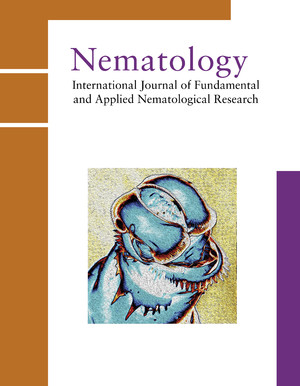The cereal cyst nematode, Heterodera latipons, is an important plant parasite causing substantial yield losses in wheat throughout the world. This study aimed to determine genetic and pathogenic variation in H. latipons populations obtained from the southern part of Turkey. The populations were identified as H. latipons by sequencing the ITS-rDNA region and further sequence analysis showed an intraspecific genetic variation in H. latipons populations, which were clustered into different groups. The International Test Assortment materials were used to determine pathogenic variation (pathotypes) in these populations. The results showed that ‘Ortolan’, ‘Morocco’, ‘KVL191’, ‘Bajo Aragon 1-1’, ‘Herta’, ‘Martin 403-2’, ‘Sun II’ and ‘Pusa Hybrid Bsi’ cultivars were resistant or moderately resistant to the tested nematode populations. ‘Emir’, ‘Dalmatische’ and ‘Capa’ were susceptible to H. latipons populations. The Hatay population of H. latiponswas detected as the most virulent nematode population because ten out of 20 cultivars were susceptible or moderately susceptible to this population. The least virulent population was the Kilis population, which caused susceptible reaction on six out of all cultivars with different levels. Based on this scheme, the Turkish populations were in the Ha1 group: the reactions of barley, oats and wheat classified them as either Ha41 or Ha51. Barley ‘KVL191’ was resistant to all nematode populations but susceptible to Ha51, and the reactions of the other barley cultivars were also consistent with the Turkish populations being Ha51. ‘AUS10894’ was susceptible to three nematode populations but resistant to Ha41, and the reaction of ‘Capa’ was also consistent with the Turkish populations being Ha51. However, the degree of susceptibility of all wheat differentials distinguishes the Turkish populations from other pathotypes in the Ha1 group.


